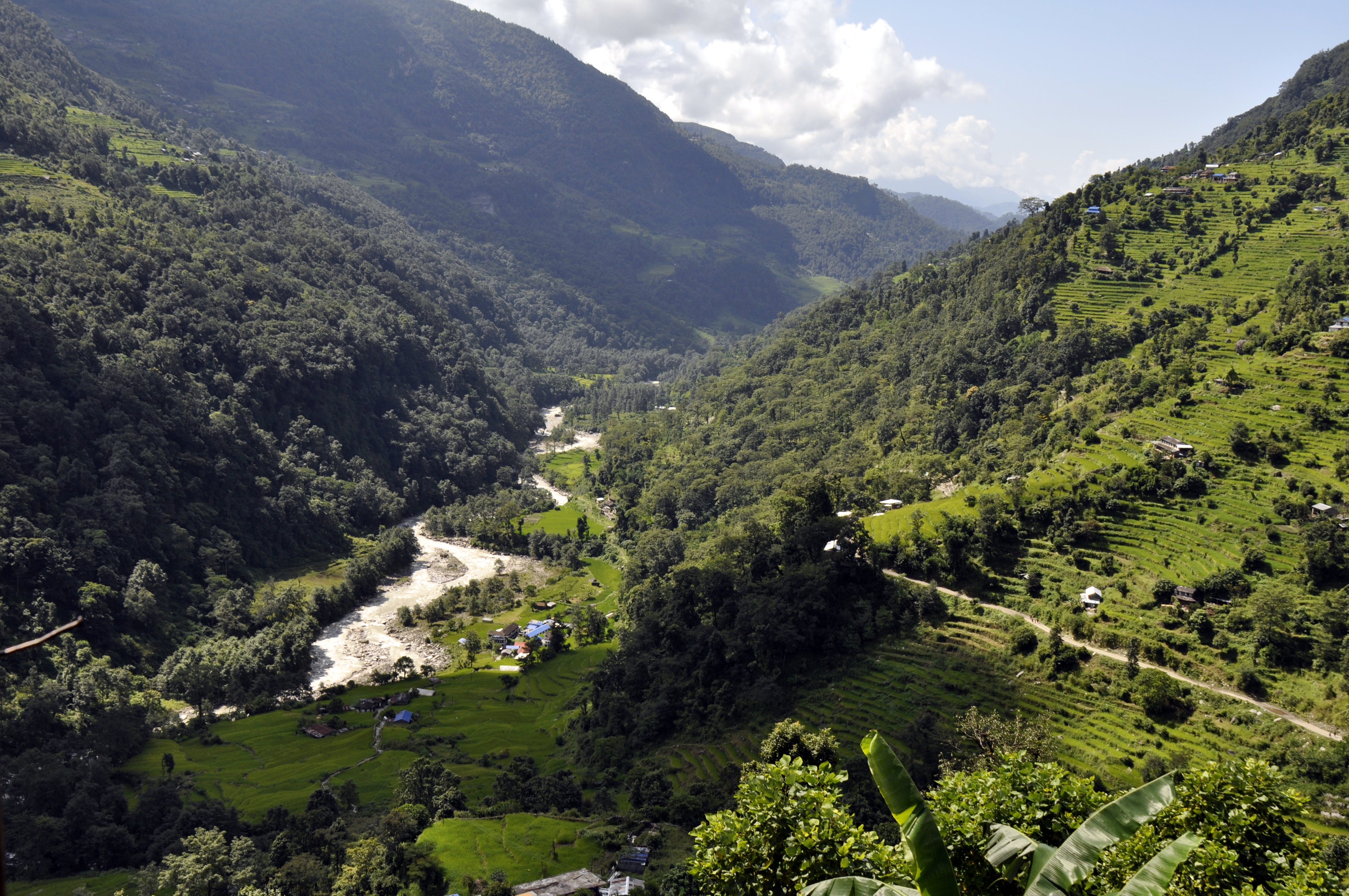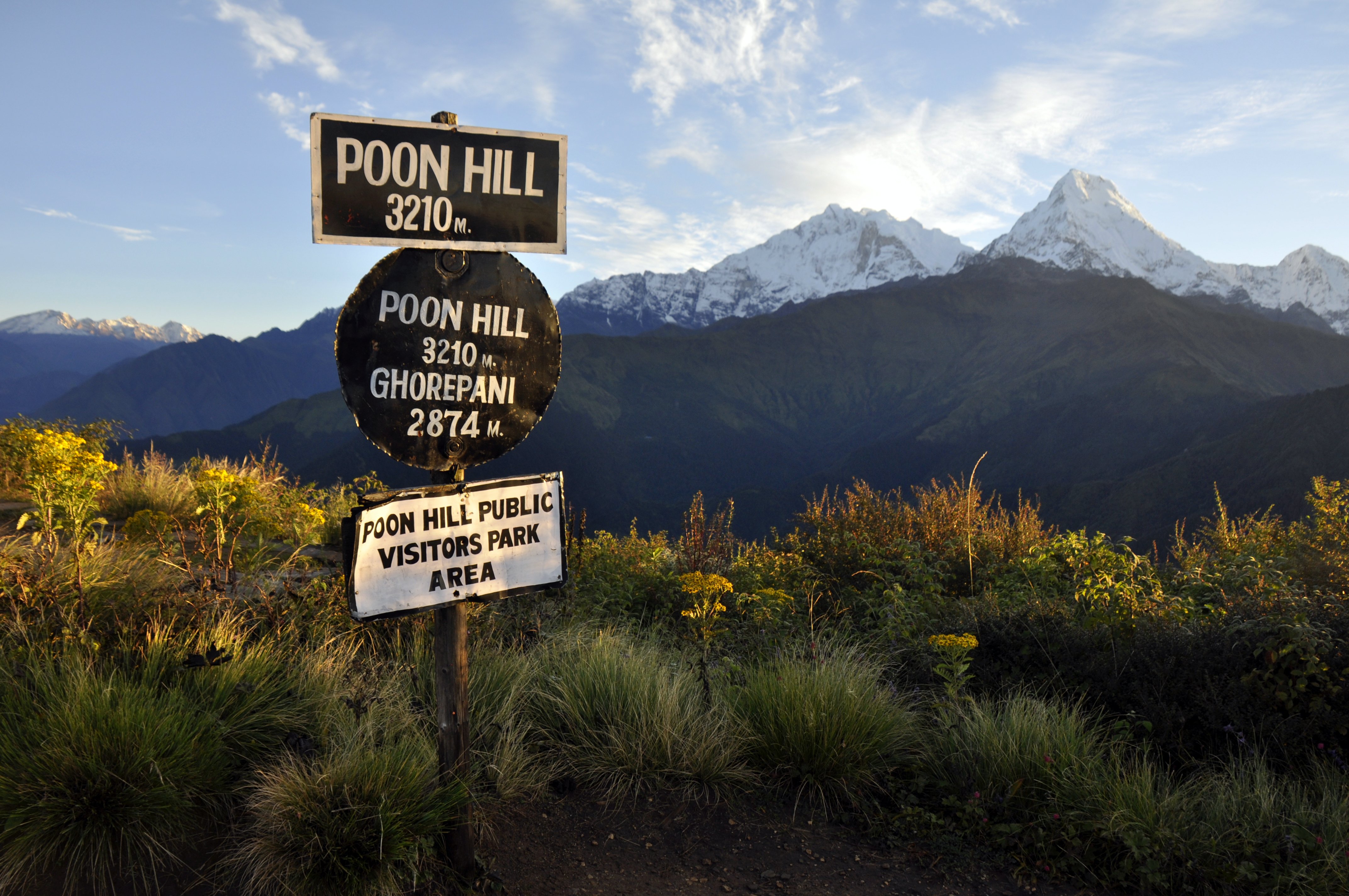Ben, my Nepal travel partner and fellow blogger, has been documenting his 6 month trip across Asia in quirky 90 second travel snippets. But while we were in Nepal, I seemed to be the one taking the video, and he was the one making insightful comments, so we decided, this time, to switch… So here is his account of our 4-day trek to Poon Hill/Ghorepani. My 90 second travel video is coming soon.

Day 1:
I told Hannah to pack light, but she didn’t listen and has spent the evening bearing her very heavy load up some very steep stairs with an expression very reminiscent of a participant in a desert marathon or someone who has spent more than two hours inside of a Walmart.The only difference between the weight of our packs is Hannah’s new SLR, the kind of machinery that looks like it can take X-rays of distant falcons, or, in the hands of a photographer like Hannah, at least some really beautiful pictures. If there was ever opportunity to use it, that is; after 48 hours of nonstop rain in our base in the tourist hub of Pokhara, we had come to a kind of silent consensus that our four day trek up to Poon Hill would be wet, leech-ridden, and just generally miserable, but better than coming to Nepal only to sit in cafes all day (the most promising indoor activity being the Brontosaurus Nepali Language School).
But miraculously, skies had cleared and there was even talk from a guide at lunch, which seemed so reckless that I didnt tell Hannah, that monsoon season itself had ended the day before the trek.
But by 5 PM our first day of the trek, we’d already forgotten all of that. We were too busy taking in Nepal’s spectacular beauty; terraced rice patties, granite mountain rivers, and cobblestone villages that we agreed evoked, inevitably, Switzerland, a country that cannot seem to stay out of any conversation about tall mountains (I’ve now been to the Switzerlands of India, Pennsylvania, and Virginia, none of which look much alike).
After several false alarms relating to several downhill guesthouses disingenuously claiming to be part of our destination town that is several hundred steps higher, we settle at the Super View Guesthouse. Our bedroom that night costs $2 and has a hot shower, plywood walls that leak conversation and cigarette smoke and has possibly the best view of any place I’ve ever slept.
Day 2:
We had about 500 meters to climb on Day 2. Thankfully, the incline turned out to be quad-kinder than our first. It took us through a misty, moss-furred forest where ferns grow on trees. We agreed that if any trees could talk, these would be those.It took us less than four hours to reach Ghorepani, where we have to stop in order to catch sunrise the next morning on nearby Poon Hill. In the next few hours, we learned we’d beaten not only a nasty downpour, but great migrations of package tour trekkers. A dozen Brits and handful of Koreans wearing puddles of monsoon decamped in Hotel See You Lodge’s dining room, plucking off leeches and killing them with salt on the floor. The wood stove acquired a coat of saturated Gore-tex.
One of the Koreans stripped to his Superman boxers and Incan-inspired fleece and didn’t put on any more clothes for the rest of the evening. Hannah and I agreed that this is pretty much the definition of swagger.
Day 3:
This is the day that our trek earns its name: Poon Hill. Nevermind that this sounds like an overlook where Eisenhower teenagers would go to neck or some kind of redneck euphemism. This view’s best at sunrise, and the general mood is what you’d expect for a 5 AM, hour-long uphill climb.The sunrise and view of the surrounding peaks are so spectacular that if I tried to describe them I’d just wind up recycling adjectives from middle school poetry. I will say that if you plopped Poon down in Virginia, it would be a beast of a mountain at 3100 meters. But this is Nepal, and next to titans like Annapurna–the 10th largest peak in the world and almost 8k meters high–poor Poon’s been demoted to hill.
The crucial point is that we beat the masses of organized trekkers back to Hotel See You Lodge for breakfast. We’d begun to feel a little smug around these groups of 5 to 10. They booked their trips at home for some ungodly sum and have guides and a small army of porters. As an advancing mass, they give a vague impression of very well-fed refugees with expensive rain gear. But you don’t want to get stuck behind them in ordering meals–they’re allowed to get whatever they want off the menu. (Except for drinks–you’d periodically hear one of them asking permission from their guide for an extra soda, just like my Special Drink quota growing up in the Paviour residence).
Because Hannah’s got to get back to work, we packed two days of walking into Day 3. Since its mostly downhill, it didn’t feel quite like 9 hours of walking. We spotted Koreans ordering ramen for lunch and decided it would make a good, cheap snack. Except the noodles have actually been imported from Korea, across oceans and on the backs of donkeys, driving up the price to an unfathomable $4. I later learn that some Koreans eat nothing but these noodles for their entire trek.
Snow View Lodge is built from stone with Hobbit, head-smacking doorways and oddly angled homemade staircases. We’re the only guests. We sat on the porch, reading while a seven or eight year old girl put our soreness into perspective by hauling giant baskets of sawdust in a wicker basket slung across her head with a band of cloth.
Day 4:
We’d assumed Snow View had taken its name from a playbook of the all-powerful Committee. The Committee has set standardized menus, prices, and spelling mistakes across all of the guesthouses in the Annapurna region. Maybe it also named guesthouses; Hungry Eye Guesthouse appears to be the Motel 6 of Annapurna. Anyway, Snow View actually has a snow view of a nearby whitecap called Fish Tail.As we descended, we talked about how easy it is to get used to beauty like this, how ordinary it can feel in the moment to stop for a Coke at a snack shop overlooking a valley with multistory waterfalls and plateaus of rice terraces. At the time, it’s just a soda and shade; but in memory, or pictures, it becomes something profound.
It’s still sunny and hot as we return to civilization (aka wi-fi) in Pokhara. We’d been planning our post trek dinner practically as soon as we left: Godfather’s Pizza, our favorite authentic Nepali restaurant. Their pizzas and pastas come sprinkled with AUTHENTIC yak cheese (raising questions on how you go about faking yak cheese).
It is only then, on the walk to the restaurant, that we are finally caught in the rain.






